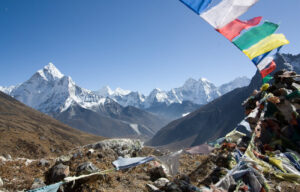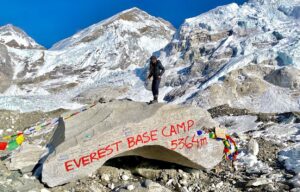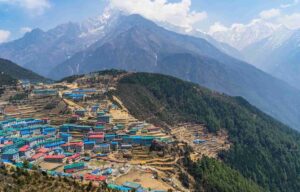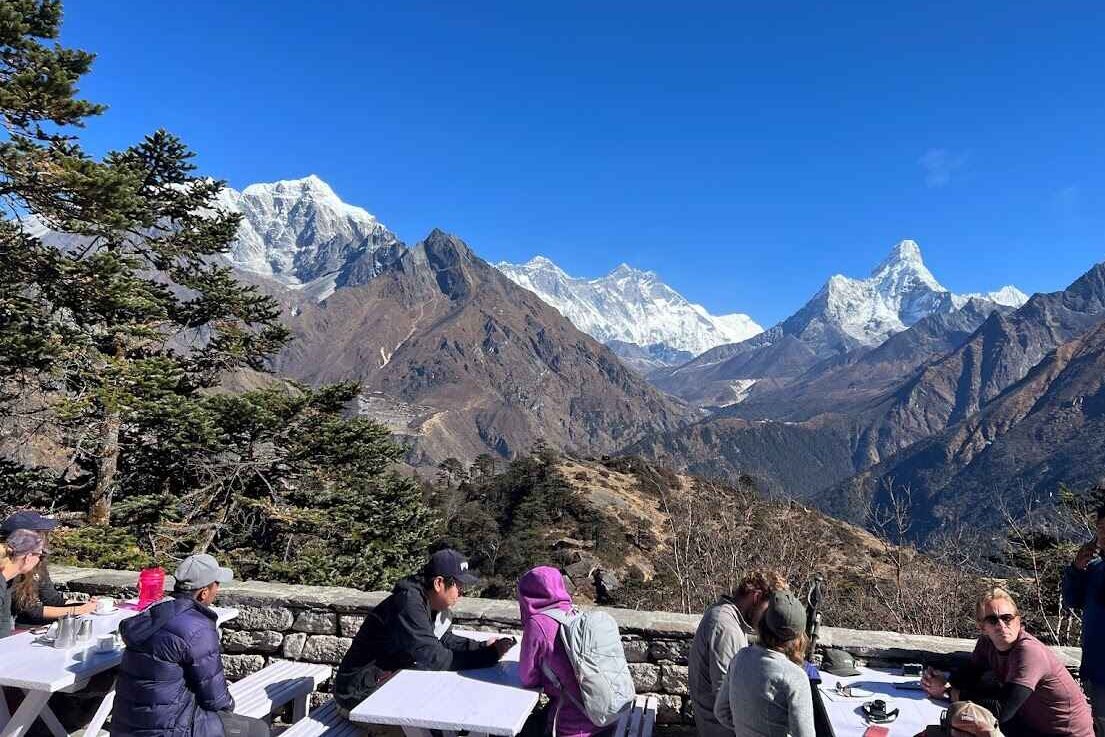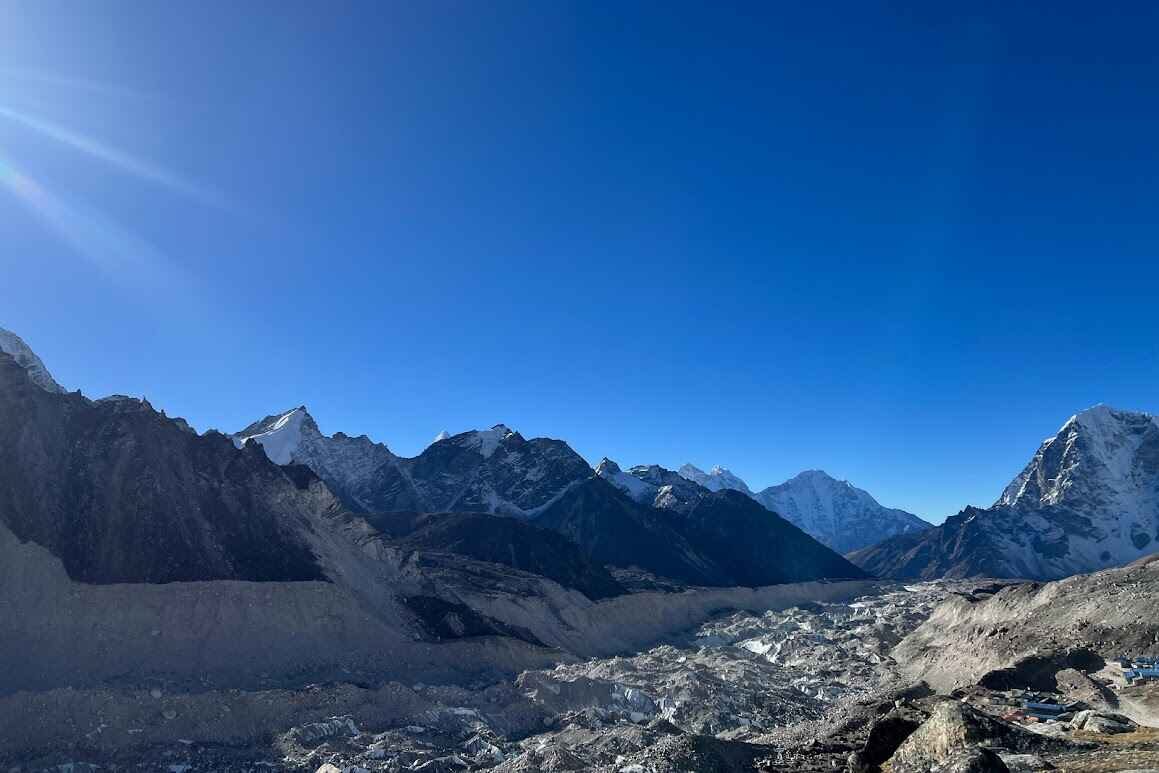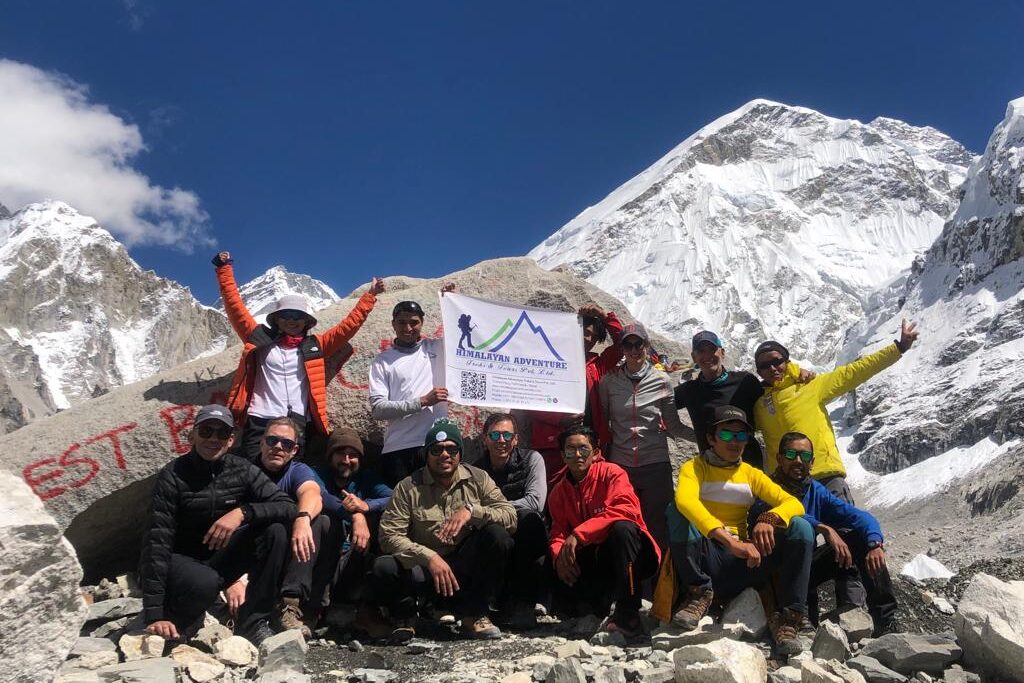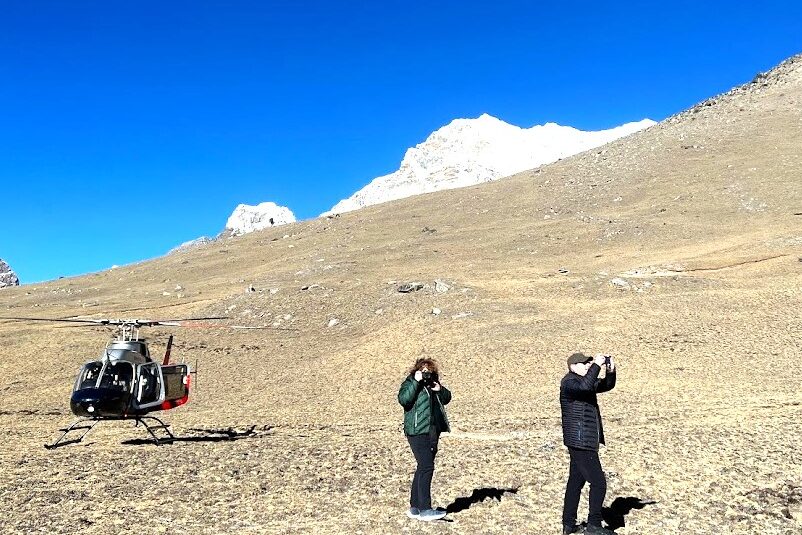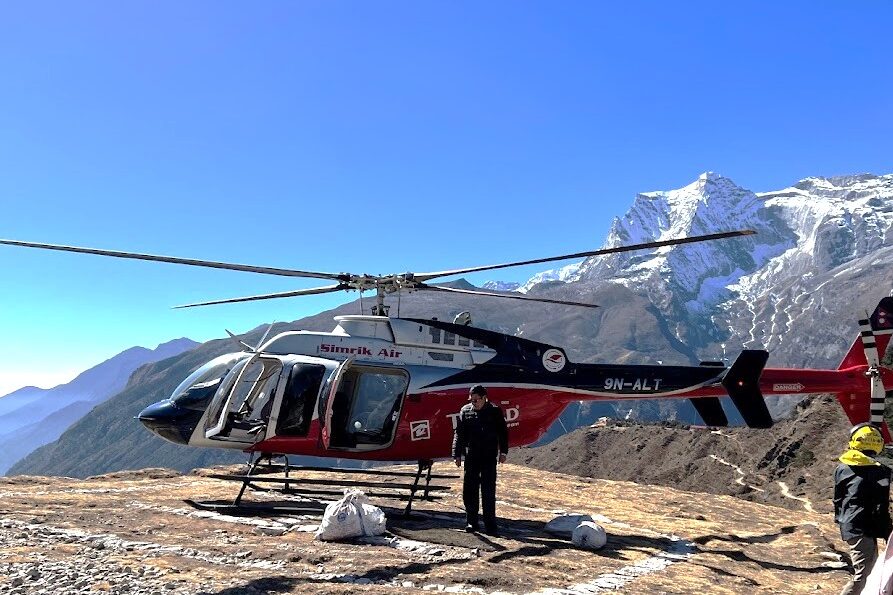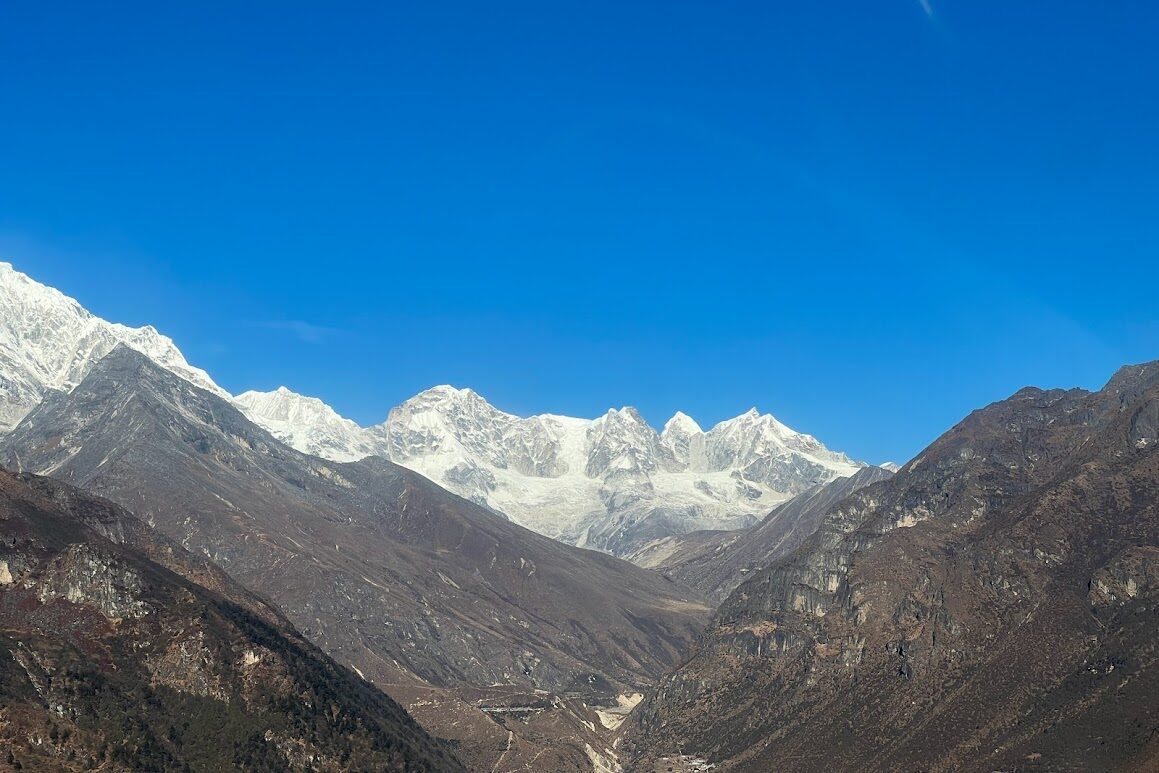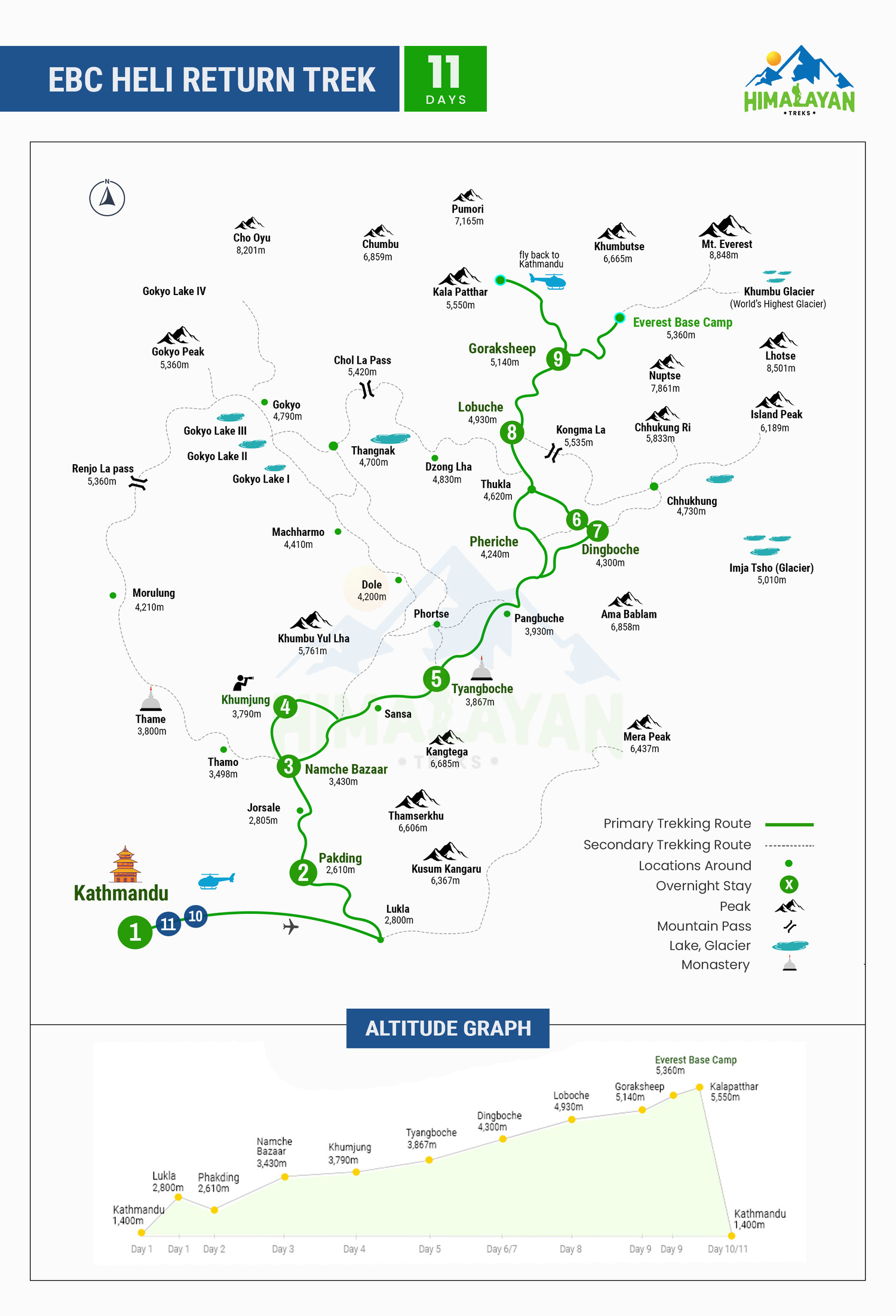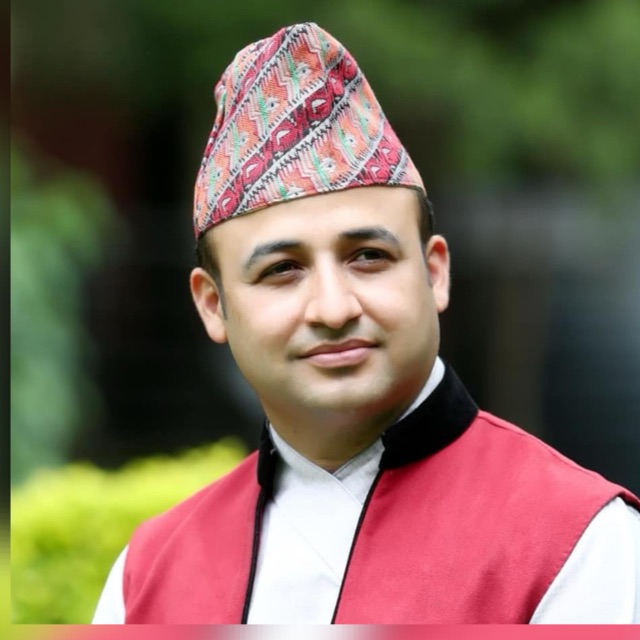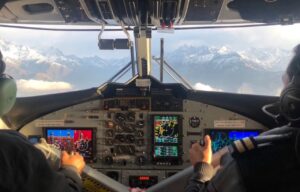Trip Introduction
In a world where the Himalayas are the most beautiful and wild, you can go back in time and experience the call of adventure. Welcome to the Everest region, a place full of mystery and magic. Here, old stories and rough landscapes combine to make a view unlike any other.
In this endless space, the Himalayas stand like quiet guardians, their snow-capped peaks cutting through the sky with a deep, awe-inspiring grace. Mount Everest, known locally as Sagarmatha, or the “Goddess of the Sky,” stands tall and majestic among the sharp peaks and frozen valleys, inspiring awe in all who see her.
But beyond towering peaks, the Everest region opens up into a realm of magic and revelation, where each step shows a new wonder and every view fills the soul with awe. Travel along the historic trade routes that yak caravans carrying priceless goods from distant locations once used. Explore hidden valleys adorned with lush woods and alpine meadows. Rhododendrons add a splash of color to the scenery in crimson and gold, and elusive wildlife roams freely.
In this land of old practices and customs, the Sherpa people have built a way of life that is as strong and stable as the mountains. The Sherpas welcome travelers with open arms and warm smiles. They share their rich cultural history and timeless knowledge with anyone who comes to be with them.
There is peace and quiet in the Himalayan wilderness, but danger hides in the shadows. Avalanches, blizzards, and huge cracks in the ground can be very dangerous for travelers who aren’t careful. Still, those strong enough to face the dangers of the high Himalayas will be rewarded in ways that can’t be measured. They will feel like they’ve accomplished something great by reaching the highest points of nature and making connections beyond time and space.
So, take a trip back in time to when the air smells like juniper, and the sounds of old songs linger on the breeze. Explore the area around Everest, where the present and the past meet in a timeless dance of discovery and travel and where the spirit of adventure knows no limits.
Embark on an exhilarating journey to the legendary Everest Base Camp, where the awe-inspiring Himalayan landscapes await. This unique adventure blends the excitement of trekking with the comfort of a helicopter return, offering an unforgettable experience for all.
Your expedition begins in Kathmandu, where you’ll receive a warm welcome from your guide at Himalayan Adventure Treks & Tours. After a briefing on the trekking itinerary and necessary preparations, you’ll board a scenic flight to Lukla, a picturesque mountain town nestled in the heart of the Everest region.
From Lukla, the trek to Everest Base Camp unfolds amidst stunning alpine scenery, charming Sherpa villages, and ancient Buddhist monasteries. Trekking through vibrant rhododendron forests, crossing suspension bridges over rushing rivers, and ascending rocky trails with panoramic views of the surrounding peaks will fill each day with new adventures.
As you journey towards Everest Base Camp, the legendary staging point for climbers aiming to conquer Mount Everest, you’ll stay in cozy tea houses and lodges, immersing yourself in Sherpa culture and hospitality.
When you arrive at Everest Base Camp, the Khumbu Icefall and the imposing Himalayan giants, including Lhotse, Nuptse, and Mount Everest, will greet you with breathtaking views. Take a moment to absorb the magnificence of your surroundings and reflect on the significance of standing at the foot of the world’s highest peak.
After experiencing the magic of Everest Base Camp, the highlight of your adventure awaits—the helicopter return flight. Soaring above the rugged mountain terrain, you’ll enjoy unparalleled views of the Himalayas from a unique perspective.
As you fly back to Kathmandu, you’ll be treated to mesmerizing aerial vistas of snow-capped peaks, winding rivers, and remote mountain villages. This is a truly unforgettable conclusion to your Everest Base Camp expedition, providing a bird’ s-eye view of the majestic beauty of the Himalayas.
Upon landing in Kathmandu, the Himalayan Adventure Treks & Tours team will greet you and transfer you to your hotel. Here, you can reminisce about your incredible journey over a celebratory dinner, cherishing the memories created along the way.
The Everest Base Camp, Heli Return Trek, offers a once-in-a-lifetime experience that seamlessly blends trekking with the luxury of a helicopter return. Whether you’re an experienced trekker seeking a new challenge or an adventurer eager to explore the wonders of the Himalayas, this extraordinary journey promises memories that will last a lifetime.
Outline Itinerary
Day 01: Arrival at Kathmandu Airport
Day 02: Fly from Kathmandu to Lukla (2860m) and trek to Phakding (2610m)
Day 03: Trek from Phakding to Namche Bazaar (3446m)
Day 04: Acclimatization Day Visit Khumjung Village, Hotel Everest View (3880m)
Day 05: Trek from Namche Bazaar to Tengboche (3860m)
Day 06: Trek from Tengboche to Dingboche (4360m)
Day 07: Acclimatization day in Dingboche (4360m)
Day 08: Trek from Dingboche to Lobuche (4910m)
Day 09: Trek from Lobuche to EBC (5360m) to Gorakshep (5160m)
Day 10: Trek from Gorakshep to Kalapatthar (5545m) for Sunrise, then fly back to Kathmandu by Heli
Day 11: Departure to Airport
Highlights of the Everest Base Camp Heli Return Trek
Majestic Flight to Lukla: Take an exciting flight from Kathmandu to Lukla in an old plane and see the natural beauty of the Himalayas spread below you.
Sherpa Villages and Traditions: You can trek through old Sherpa villages with prayer flags and traditional stone homes. Time seems to have stopped in these villages because of the mountains’ timeless beauty.
Namche Bazaar Exploration: trek through the busy streets of Namche Bazaar, a lively trading post where both tourists and locals gather against a backdrop of high mountains.
Sacred Tengboche Monastery: Honor the traditional Tengboche Monastery, a spiritual haven hidden in the clouds with stunning views of Mt. Everest and the nearby peaks.
Nature-Based Acclimatization: Take a break in Dingboche, where the Himalayas are all around you, and let your mind connect with the mountains’ ancient rhythms.
Famous Everest Base Camp: Mountain climbers worldwide have started historic treks from this famous base camp to reach the top of the world’s highest mountain.
Summit of Kala Patthar: Climb to the holy peak of Kala Patthar for a breathtaking view of Mt. Everest, Lhotse, and Nuptse. The view is a timeless panorama of Himalayan grandeur.
Ascending above the clouds and following the shape of the old landscape, the thrilling helicopter ride from Gorakshep back to Kathmandu is a great way to say goodbye to the mountains.
Encounters with Culture: Learn about the rich tapestry of Nepalese culture by telling stories, laughing with locals, and enjoying the warmth of Sherpa welcome in the mountains.
Trek the Himalayan trails with the assistance of knowledgeable Sherpa guides and porters, guided by tradition. Their deep knowledge of the area guarantees a trip rich in tradition and truth.
The Best Season For EBC Heli Return Trek
- The best season for the Everest Base Camp Heli Return Trek is autumn, spanning from September to November.
- Autumn offers mild temperatures, clear skies, and minimal rainfall, providing optimal conditions for trekking and helicopter flights.
- This season’s crisp mountain air and vibrant foliage enhance the trekking experience.
- Clear visibility during autumn allows trekkers to enjoy uninterrupted panoramic views of the majestic Himalayan peaks.
- Traveling during autumn ensures a comfortable and enjoyable journey with fewer weather-related disruptions.
Meals and Accommodation
Meals
- Breakfast: Start your day with a hearty meal of eggs, toast, porridge, fruits, and hot beverages like tea or coffee.
- Lunch: Enjoy a satisfying midday meal with options such as dal bhat (traditional Nepali dish of rice, lentil soup, vegetables, and pickles), pasta, noodles, sandwiches, or rice dishes.
- Dinner: Wind down in the evening with a wholesome dinner comprising soups, curries, stir-fries, rice, noodles, or potatoes, accompanied by tea or hot chocolate.
Accommodation
- Tea Houses and Lodges: Along the trekking route, trekkers stay in tea houses and lodges run by local families. These accommodations offer basic yet cozy rooms with twin beds or dormitory-style arrangements.
- Room Facilities: Rooms typically come with blankets, pillows, and clean bedding. Shared bathroom facilities are common, and hot showers are available for an additional fee.
- Communal Areas: Tea houses and lodges feature communal dining halls and lounges where trekkers can relax, socialize, and enjoy stunning mountain views.
- Authentic Experience: Accommodation in tea houses and lodges provides an authentic taste of Himalayan hospitality, allowing trekkers to connect with local culture and traditions.
Atmosphere
- Rustic Charm: Embrace the rustic charm of mountain accommodation, with cozy interiors warmed by wood-burning stoves and candlelit evenings creating a cozy ambiance.
- Socializing: Tea houses and lodges serve as gathering points for trekkers worldwide, fostering a sense of camaraderie and friendship as stories are shared and experiences exchanged.
- Starry Nights: Experience the magic of clear Himalayan nights, where star-filled skies and crisp mountain air create a serene backdrop for relaxation and reflection.
Overall Experience
- Balance of Comfort and Adventure: Meals and accommodation on the Everest Base Camp Heli. Return Trek strike a balance between comfort and adventure, allowing trekkers to immerse themselves fully in the Himalayan trekking experience while enjoying warm hospitality and nourishing meals along the way.
